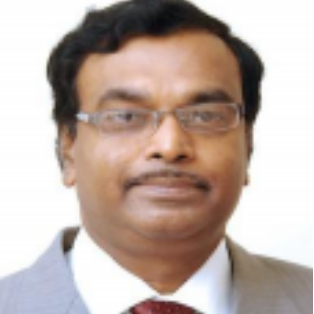
B.Prabhakara Rao
Work place: JNTU-Kakinada, Andhra Pradesh, India
E-mail: drbpr@rediffmail.com
Website:
Research Interests: Information Systems, Coding Theory, Information Theory, Algorithmic Information Theory
Biography
Dr.B.PrabhakaraRao received his B.Tech degree in Electronics and Communications Engineering. M.Tech degree in Electronics and Communication Systems from S V University, Tirupati in 1979, 1981 respectively and received the Ph.D degree from IISC, Bangalore in 1995. Dr.B.Prabhakara Rao has more than 28 years of experience in teaching and 20 years of R & D. He is an expert in Signal Processing & Communications. He produced 7 PhD’s and guiding 26 PhD scholars. He held different positions in his career like Head of the Department, Rector and Professor, in JNTU College of Engineering, Director (Institute of Science & Technology) and Director of Evaluation; currently he is Director, Foreign University & Alumni Relations in the 58 Adaptive Multi User Detection for FD-MC-CDMA in Presence of CFO Newly Established JNT University. He published more than 102 technical papers in National and International journals and conferences .Interests are in coding theory, information theory and signal processing with applications to wireless communications.
Author Articles
CPW-fed Compact Antenna for WiMAX/WLAN Applications
DOI: https://doi.org/10.5815/ijwmt.2019.03.02, Pub. Date: 8 May 2019
A compact antenna with Coplanar waveguide (CPW) feed for WiMAX/WLAN applications is presented in this paper. Antenna is fabricated on FR4 substrate having size of (35mm×25mm).The rectangular antenna is etched with slit and stub which obtains triple band. The measured results shows that S11< ̶ 10dB impedance bandwidths are at 100MHz(2.39-2.49 GHz), 800MHz(3.4-4.2 GHz) and 1680 MHz(5.4-7.08 GHz).These frequency ranges meet the bandwidth requirement for Wireless local area network (WLAN) 2.4/5.8 GHz bands and Worldwide interoperability for microwave access (WiMAX) 3.5 GHz band. Bandwidth, S11, VSWR, radiation and gain characteristics of the antenna are investigated. Antenna exhibits good resemblance between measured and simulation results
[...] Read more.Adaptive Multi User Detection for FD-MC-CDMA in Presence of CFO
By Guntu. Nooka Raju B.Prabhakara Rao
DOI: https://doi.org/10.5815/ijwmt.2014.04.04, Pub. Date: 1 Nov. 2014
The main targets of multi-carrier direct sequence code division multiple access (MC-DS-CDMA) mobile communication systems are to overcome the multi-path fading influences as well as the near-far effect and to increase its capacity. Different types of optimal and suboptimal multi-user detection schemes have been proposed and analyzed in literature. Unfortunately, most of them share the drawback of requiring an efficient practical solution. Genetic algorithm provides a more robust and efficient approach for solving complex real world problem such as multi user detection, but genetic algorithms are not computationally efficient. Computational complexity and performance of the genetic algorithms depends on number of generations and/or the population size, schemes involving genetic algorithms would compromise in computational complexity or performance. In this paper we propose adaptive population sizing genetic algorithm based multi user detection algorithm and compare its performance with existing multi user detection algorithms in various channels. Simulation results confirmed that the proposed adaptive genetic algorithm assisted multi user detection algorithm performs better compared to the existing multi user detection algorithms.
[...] Read more.Other Articles
Subscribe to receive issue release notifications and newsletters from MECS Press journals